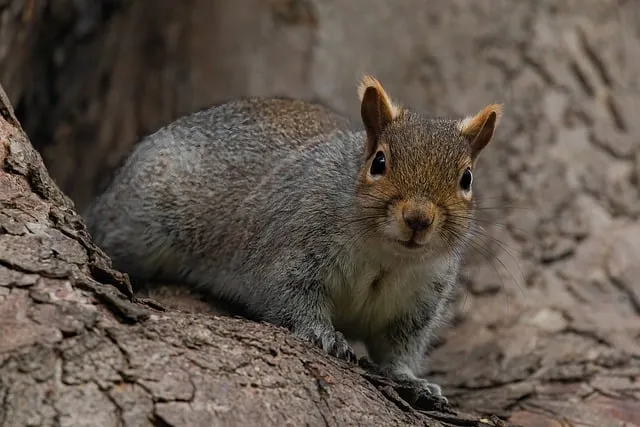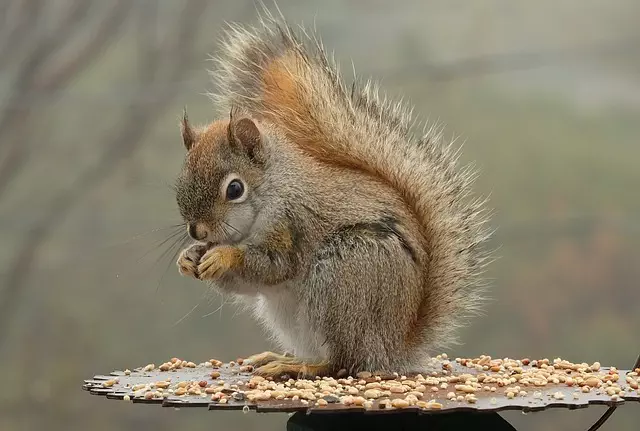Rodent infestations pose significant challenges for property owners, emphasizing the need to recognize common signs and seek professional rodent control. The primary intruders include rats, mice, and squirrels, each with distinct behaviors. Early detection is crucial for effective elimination through tailored strategies. Professional inspections involve advanced techniques and tools to locate hidden activity, identify entry points, and provide insights into potential health risks. Non-lethal trapping methods are used, followed by regular follow-up inspections and sanitation. Experts employ advanced technologies like infrared sensors and humane baiting systems for accurate detection and mitigation. After receiving a detailed inspection report, homeowners can implement strategic measures to break the infestation cycle and maintain a rodent-free environment through professional rodent control.
“Experience peace of mind with professional rodent inspections—a crucial step towards achieving effective rodent control. This comprehensive guide delves into the intricacies of these inspections, shedding light on why they’re essential in managing infestations. From understanding common rodent types and signs to interpreting expert findings, we explore the entire process. Learn about advanced tools, benefits of professional services, and post-inspection tips for homeowners seeking long-term solutions. Discover how professional rodent control can revolutionize your living space.”
Understanding Rodent Infestations: Common Types and Signs

Rodent infestations can be a significant concern for homeowners, businesses, and property managers alike. Understanding the common types and signs is crucial when it comes to seeking professional rodent control. The most prevalent rodents include rats, mice, and squirrels, each with their unique behaviors and entry points. Rats, known for their agility, often gain access through pipes, walls, or floors, leaving behind visible droppings and gnaw marks. Mice, being smaller, can squeeze into tiny cracks and spaces, indicating their presence through chewed wires, insulation, or stored food items.
Signs of an infestation may include unusual noises, such as scurrying sounds or faint sizzling, particularly at night. You might also notice holes in walls, floors, or ceilings, as well as strange odors. Uneaten food particles, droppings with distinct shapes and sizes, and even live young can be telltale signs. Early detection is key to effective professional rodent control, as it allows for the implementation of tailored strategies to eliminate the problem at its source, ensuring a pest-free environment.
The Role of Professional Rodent Inspections

Professional Rodent Inspections play a pivotal role in maintaining a healthy and safe living or working environment. These specialized services go beyond basic pest control, offering comprehensive assessments to identify and mitigate rodent presence and potential hazards. Trained professionals utilize advanced techniques and tools to locate even the most hidden rodent activity, ensuring no stone is left unturned.
By conducting thorough inspections, experts can pinpoint entry points, nesting areas, and damage caused by rodents. This information is crucial for implementing effective prevention strategies and tailored control measures. Moreover, professional rodent inspections provide valuable insights into potential health risks associated with rodent infestations, helping property owners or managers take proactive steps to protect tenants and themselves.
Step-by-Step Process of a Comprehensive Inspection

A professional rodent inspection involves a meticulous, step-by-step process designed to identify and mitigate any signs or evidence of rodent activity. It begins with a thorough examination of the property’s exterior, looking for potential entry points like gaps in walls, floors, or ceilings, as well as visible signs of damage caused by rodents. Using specialized tools and equipment, inspectors then conduct a detailed interior scan, checking for dropped feces, gnaw marks, and other telltale signs.
The next phase focuses on identifying rodent habitats and potential food sources. This includes inspecting attics, basements, and crawl spaces for nests, as well as kitchens and dining areas for food debris or pet food left unattended. Once active rodent presence is confirmed through physical evidence, professionals employ a combination of non-lethal methods to trap and expel the rodents humanely. Regular follow-up inspections are then conducted to ensure the property remains free from future rodent infestations, employing strategies like sealing entry points and maintaining proper sanitation practices.
Advanced Tools and Techniques Used by Experts

In the realm of professional rodent control, experts wield advanced tools and employ sophisticated techniques to accurately detect, assess, and mitigate rodent infestations. These professionals aren’t just equipped with standard traps; they utilize cutting-edge technologies like infrared sensors, motion detectors, and high-resolution cameras to pinpoint rodents’ hiding places and track their movements without causing disruption or distress to the environment.
Moreover, experts in rodent inspections leverage heat signature analysis, acoustic monitoring, and advanced baiting systems that are both humane and highly effective. They also employ non-invasive methods such as visual inspections using fiber optics and tiny cameras, ensuring minimal interference with homes, businesses, and ecosystems. These tools and techniques not only enhance the precision of inspections but also contribute to safer and more environmentally friendly rodent control strategies.
Interpreting Inspection Results and Recommendations

Upon receiving your professional rodent inspection report, understanding the results is crucial for effective rodent control. The document will detail areas of potential entry points, evidence of infestation, and degree of damage caused by rodents. Each finding comes with recommendations tailored to prevent future infestations and mitigate existing issues.
These recommendations often include structural changes, sealing entry points, and trapping strategies. By addressing the findings, property owners can break the cycle of rodent invasion, ensuring a safe and healthy living environment. Professional rodent control experts interpret these results with years of experience, offering practical solutions that cater to each unique situation.
Benefits of Engaging Professional Rodent Control Services

Rodent infestations can cause significant damage to properties, from chewing through electrical wires to contaminating food sources. Engaging professional rodent control services offers numerous benefits that go beyond immediate pest control. These experts are equipped with advanced knowledge and tools to identify and eliminate rodents humanely and effectively, preventing future reinfestation.
Professional rodent control specialists employ strategic methods tailored to specific species, ensuring precise targeting. They also provide expert advice on sealing entry points and implementing preventive measures, creating a robust long-term solution. By calling in professionals, homeowners can enjoy peace of mind, knowing their properties are free from rodents and protected against future invasions, thereby safeguarding health, property, and investments.
Preventative Measures: Post-Inspection Tips for Homeowners

After a professional rodent inspection, homeowners can take several preventative measures to maintain a rodent-free environment. The first step is to seal any entry points that rodents might use to gain access to your home. This includes checking for gaps in walls, floors, and ceilings, as well as around pipes and electrical wires. Using steel wool or concrete to patch these holes can effectively prevent future infestations.
Additionally, regular cleaning and sanitation are crucial. Rodents are attracted to food sources, so keeping your kitchen and dining areas clean and promptly disposing of garbage is essential. Storing food in airtight containers and sweeping floors daily can further deter rodents. Lastly, maintaining a lush lawn and trimming trees away from the house can make your property less appealing to these pests, as they prefer dense, secluded habitats. Implementing these post-inspection tips can significantly contribute to effective professional rodent control.
